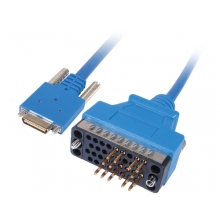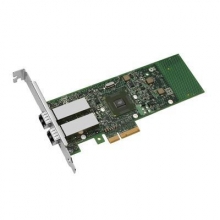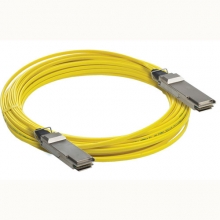- Optical Transceivers
- SFP+ Transceivers
- XENPAK Transceivers
- XFP Transceivers
- X2 Transceivers
- SFP Transceivers
- Compatible SFP
- 3Com SFP
- Alcatel-Lucent SFP
- Allied Telesis SFP
- Avaya SFP
- Brocade SFP
- Cisco SFP
- D-Link SFP
- Dell SFP
- Enterasys SFP
- Extreme SFP
- Force10 SFP
- Foundry SFP
- H3C SFP
- HP SFP
- Huawei SFP
- Intel SFP
- Juniper SFP
- Linksys SFP
- Marconi SFP
- McAfee SFP
- Netgear SFP
- Nortel SFP
- Planet SFP
- Q-logic SFP
- Redback SFP
- SMC SFP
- SUN SFP
- TRENDnet SFP
- ZYXEL SFP
- Other SFP
- FE SFP
- GE SFP
- OC3 SFP
- OC12 SFP
- OC48 SFP
- Copper SFP
- CWDM SFP
- DWDM SFP
- BIDI SFP
- Fiber Channel SFP
- Multi-Rate SFP
- SGMII SFP
- Compatible SFP
- GBIC Transceivers
- Passive Components
- Networking
- Cables
- Equipments
- Tools
- Special Offers


Broadband ideas, narrower band of funding
A strong investment in broadband capabilities for K-12 education may be easier said than done.
A national report - compiled by the State Educational Technology Directors Association and summarized by the Wisconsin Department of Instruction on June 6 - calls for 100 megabits per second for each 1,000 students and staff members in a school by 2014-15 and an increase to 1 gigabit per second of broadband connectivity per 1,000 students and staff by 2017-18.
DPI Superintendent Tony Evers supports the report titled "The Broadband Imperative: Recommendations to Address K-12 Education Infrastructure Needs."
"Digital learning offers exciting new opportunities for more personalized learning and student engagement in every classroom," Evers said. "We must move forward quickly to supply sufficient affordable broadband access to every student both in school and at home."
Fiscal realities
Achieving that upgrade would be difficult within current budget constraints, said Chris Thompson, chief information officer of the Elmbrook School District.
Thompson said the district current has 50 megabit and 150 megabit capacity between schools, though there is more capacity at the high schools than in the elementary schools. He noted the schools connect first to the central office and then go through an Internet firewall.
"It's not a mandate," Thompson said. "It's as much a blueprint for DPI as is for the district."
The district currently uses Time Warner Cable for its broadband service. To increase capacity to meet the report recommendations, the district would have to spend five to six times more than the $72,000 it has budgeted annually.
Thompson noted that the district has looked into installing a fiber-optic system.
"Because our district is so long, it would take $1.5 million to $2 million," he said.
Thompson said that getting district across the state to meet national recommendations probably will need to come from one or more sources such as DPI.
What works now
In the meantime, Elmbrook is taking steps to advance its virtual teaching and learning education capacities, Thompson said.
"I think the ability to deliver personalized learning and project-based learning with one-to-one initiatives is the direction that districts will go," he said.
In the past school year, Elmbrook began allowing high school students to bring in their own technology as a learning enhancement.
Future considerations
Whether districts supply the technology or open up the ability for students to bring in their own, Thompson pointed to two inherent challenges.
"First, technology changes so much so it's hard to figure out which devices to with," he said. "Four years ago, tablets were popular, but now other devices have surpassed that, so it's hard to evaluate the technology and build a specific strategy for that one device.
"The second is that there hasn't been good research published to indicate the impact on high-achieving districts like Elmbrook. There is an indication that technology can make gains in student motivation and attendance, but a high-achieving district doesn't not have those issues."
Thompson said what drives decisions like this often is educational strategy, but more needs to be considered.
"At the end of the day," he said, "you have to justify the costs."



















































